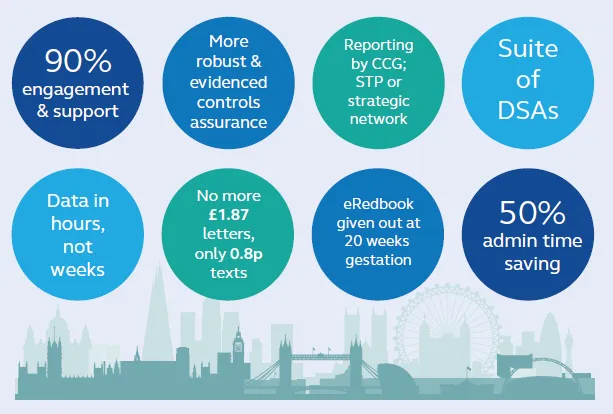Integrating London’s Child Health Records: Safer and Better Care in Just Four Months.
The System C & Graphnet Care Alliance has worked in partnership with London's commissioned services to replace 18 separate child record systems across 32 boroughs with a single pan-London electronic patient record solution, in record time.
As a result of the new London Child Information Service (CHIS), administration time has halved in one area and comprehensive data is available across a whole region in hours, not weeks. Within a few hours of being requested by the Grenfell Tower action team, the CHIS produced a full list of every child who had been resident in the previous six months.
The Rationale
Commissioned by NHS England (London region) in line with the new Child Health Digital Strategy (published in August 2016), the integrated London-wide solution aims to:
- Ensure that health professionals know where every child in London is and how healthy they are, so they can monitor and manage their care needs and act preventatively. No more children falling through ‘gaps’ in provision
- Understand the health of the capital at a population level
- Improve service efficiency
The Solution
It took the System C & Graphnet Care Alliance just four months to deliver a comprehensive electronic record of every child’s public health records in the capital.
The system is powered by CarePlus, System C’s child health management solution. Graphnet’s CareCentric shared record platform sits on top of CarePlus, broadening record access beyond the central child health teams to additional authorised professionals at their point of work, such as health visitors. The CareCentric platform also manages interfacing with third party systems such as London’s eRedbook, giving parents an electronic record to help them manage their child’s early years.
The Scope
The work involved migrating 52.5m data points and integration with 27 maternity departments, three bloodspot screening laboratories, newborn hearing screening services as well as electronic receipt of birth notification via the Spine. The system provides an electronic upload of immunisations, NIPE, bloodspot, hearing screening data, antenatal referrals as well as outbound data feeds to 0-19 services clinical systems. It integrates with London’s eRedbook.
The Benefits (Six Months After Go-Live)
1. Administration savings and efficiencies
- Savings of up to 50% on administration. Data entry staff are free to be more analytical.
- Reduction in postal costs. Letters (average cost of £1.87) have been replaced by texts (average cost of 0.8p). It is worth noting that 20% of letters do not even get delivered to Londoners’ letterboxes because local postal delivery service don’t go to every floor in tower blocks or tenements.
2. Data is available across a whole region in hours, not weeks – particularly important at times of emergency such as the Grenfell Tower fire.
3. A full suite of data-sharing agreements has been accredited and signed off. The team at NHS England (London) is making these available as a resource to all regions.
4. Statutory and local reporting is automated at the CCG, STP and local authority level.
5. More robust, evidenced data. For example:
- 100 independent midwives, responsible for 3,800 births a year, have been newly identified and are contributing data for the first time.
- Numbers of babies born with HepB has been found to be one quarter the figure previously thought (800 babies born a year).
- Over 150,000 duplicate records were merged.
Child Health Digital Strategy in London – Benefits So Far

Knowing where a child lives, tracking their newborn blood spot results, hearing and vision testing and immunisations can make a huge difference in terms of life chances, allowing appropriate interventions to support that child’s development and education.
Automating processes is vital when a third of London’s children have moved within six months of birth and are not living in the address that they are registered in with their GPs.
Kenny Gibson, head of public health commissioning NHS England (London)
CarePlus has minimised the manual data entry due to the direct interoperability with the key child health record and information systems (e.g. maternity, GP practices, bloodspot screening labs). The health records are added and updated automatically in CarePlus in a timely manner. Having one child health system across London has significantly improved tracking children’s movements and health records.
Marjan Daneshpour, head of information and South West London
Child Health Information Service lead, Your Healthcare CIC

